Potřebujeme váš souhlas k využití jednotlivých dat, aby se vám mimo jiné mohly ukazovat informace týkající se vašich zájmů. Souhlas udělíte kliknutím na tlačítko „OK“.
ASTM E2809-13
Standard Guide for Using Scanning Electron Microscopy/X-Ray Spectrometry in Forensic Paint Examinations
Automaticky přeložený název:
Standardní Příručka pro použití rastrovací elektronové mikroskopie / X-Ray spektrometrie v soudním řízení Paint
NORMA vydána dne 15.2.2013
Informace o normě:
Označení normy: ASTM E2809-13
Poznámka: NEPLATNÁ
Datum vydání normy: 15.2.2013
Kód zboží: NS-46071
Počet stran: 9
Přibližná hmotnost: 27 g (0.06 liber)
Země: Americká technická norma
Kategorie: Technické normy ASTM
Kategorie - podobné normy:
Optické měřicí přístroje
Forenzní vědy
Nátěrové hmoty, barvy a laky
Anotace textu normy ASTM E2809-13 :
Keywords:
dispersive X-ray spectrometry, EDX, EDS, embedding, forensic paint examination, scanning electron microscopy, SEM, ICS Number Code 07.140 (Forensic science),17.180.30 (Optical measuring instruments),87.040 (Paints and varnishes)
Doplňující informace
| Significance and Use | ||||||||||
|
4.1 The SEM can be used to define and compare the layer structure of multilayered samples, the structure of individual layers, the bulk elemental composition of individual layers, and the elemental composition of individual particulate components within paints and coatings. 4.2 The test methods described in this guide may have some limitations. They include the inability to detect elements in trace concentrations, the need for a conductive coating of the sample, the inability to remove a sample from most embedding materials after analysis, and the discoloration of materials by irradiation. 4.3 Although quantitative and semiquantitative methods are available for EDS (see Guide E1508), they are not appropriate for most paint analyses because of the typical heterogeneity of paint. Application of quantitative methods is further complicated by an inability to predict what compounds may be present (see 7.12.1). 4.4 The information available from a specimen may diminish as its size is reduced and its condition degrades. The smaller a specimen is, the less valuable it becomes for association with a known because it may contain fewer characteristics of the original material. As specimen size is reduced, it may no longer be representative of the original material. This may also be true of a degraded sample. 4.5 This guide is intended to advise and assist laboratory analysts in the effective application of scanning electron microscopy to the analysis of paint evidence. It is intended to be applicable to most modern scanning electron microscopes typically used in the forensic laboratory. 4.6 It is not the intention of this guide to present comprehensive methods of SEM. It is necessary that the analyst have an understanding of SEM operation and general concepts of specimen preparation before using this guide. This information is available from manufacturers’ reference materials, training courses, and references such as Scanning Electron Microscopy and X-ray Microanalysis: A Text for Biologists, Materials Scientists, and Geologists (1).3 |
||||||||||
| 1. Scope | ||||||||||
|
1.1 This guide is an outline of methods for scanning electron microscopy (SEM) intended for use by forensic paint examiners. This guide is intended to supplement information presented in Guide E1610. 1.2 The methods used by each examiner or laboratory or both depend upon sample size, sample suitability, and laboratory equipment. 1.3 The term “scanning electron microscopy” occasionally refers to the entire analytical system including energy dispersive X-ray spectrometry (EDS) or wavelength dispersive X-ray spectrometry (WDS) or both. 1.4 This guide does not cover the theoretical aspects of many of the topics presented. 1.5 This guide cannot replace knowledge, skill, or ability acquired through appropriate education, training, and experience and should be used in conjunction with sound professional judgment. 1.6 The values stated in SI units are to be regarded as standard. No other units of measurement are included in this standard. 1.7 This standard does not purport to address all of the safety concerns, if any, associated with its use. It is the responsibility of the user of this standard to establish appropriate safety and health practices and determine the applicability of regulatory limitations prior to use. |
||||||||||
| 2. Referenced Documents | ||||||||||
|
Podobné normy:
Historická
1.7.2011
Historická
1.1.2013
Historická
1.3.2011
Historická
1.10.2009
Historická
1.5.2008
Historická
1.5.2013
Odebírejte informace o nově vydaných normách ZDARMA:
Chcete pravidelně odebírat informace o nově vycházejících normách z celého světa a to zcela zdarma?
Přihlašte se k odběru. Vše je velice jednoduché a absolutně ZDARMA.
Na výběr máte vydavatele z celého světa.


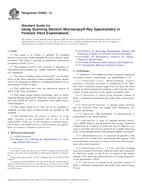
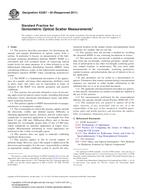 ASTM E2387-05(2011)..
ASTM E2387-05(2011)..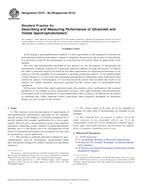 ASTM E275-08(2013)..
ASTM E275-08(2013)..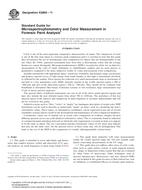 ASTM E2808-11
ASTM E2808-11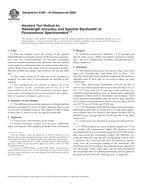 ASTM E388-04(2009)..
ASTM E388-04(2009)..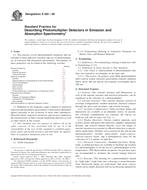 ASTM E520-08
ASTM E520-08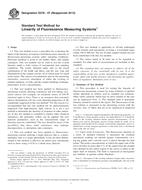 ASTM E578-07(2013)..
ASTM E578-07(2013)..
 Cookies
Cookies
